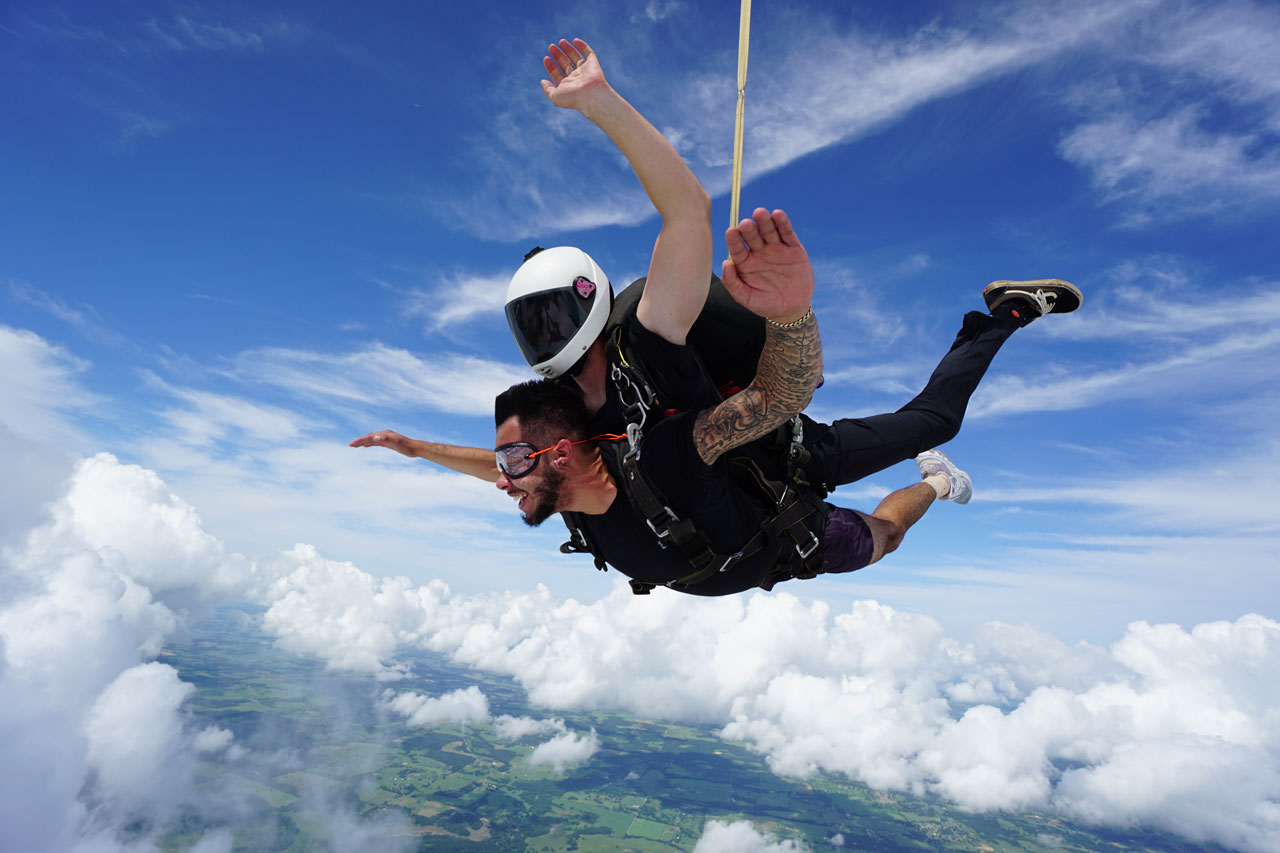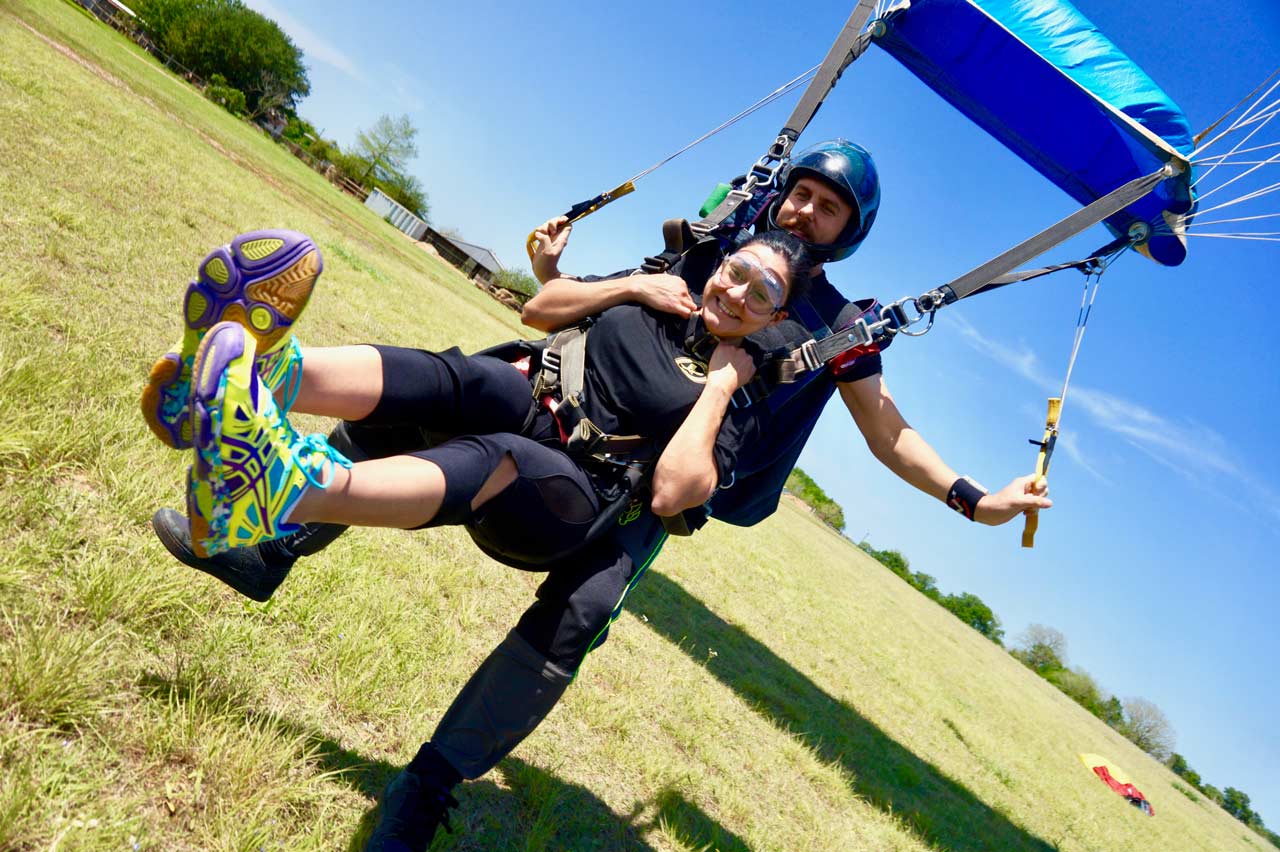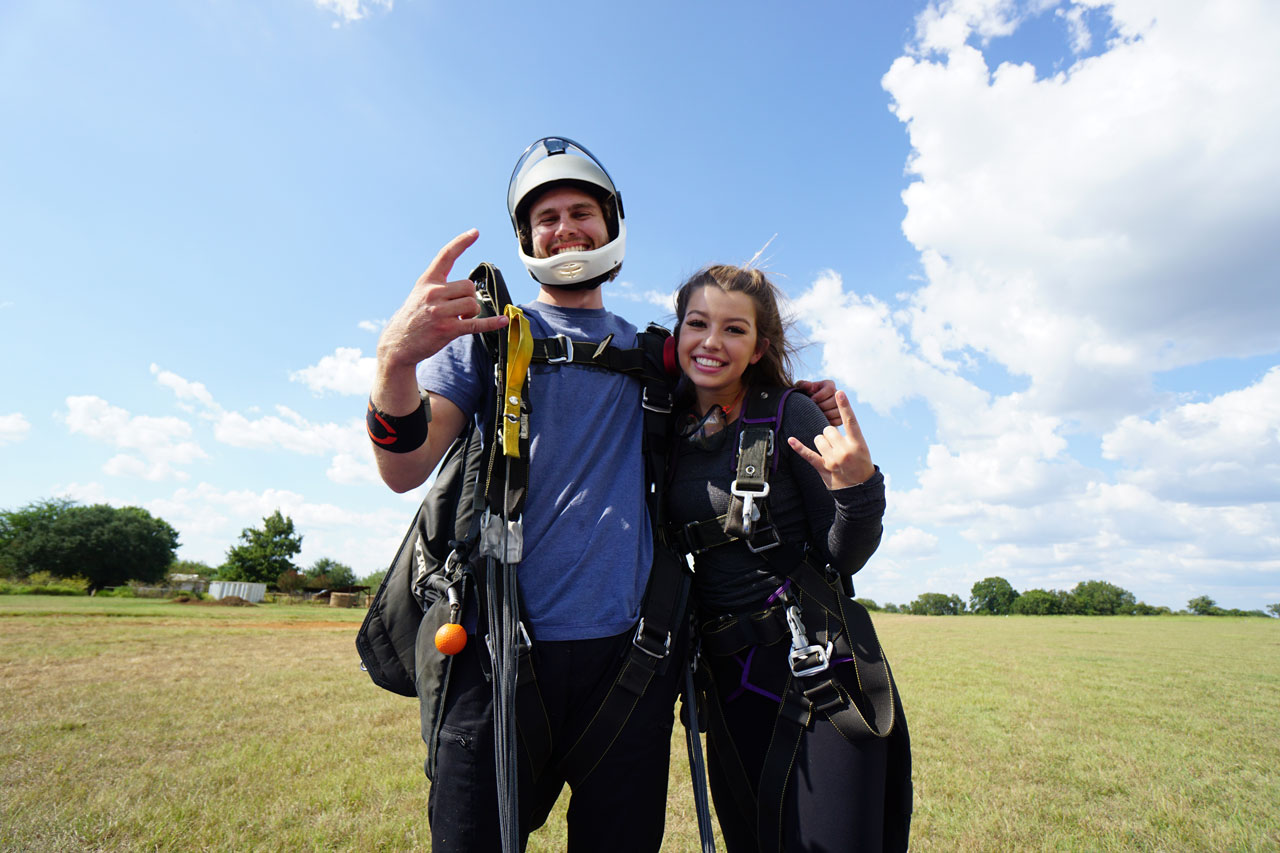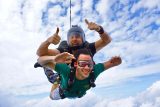Is Skydiving Safe?
Tandem Skydiving
Posted by: Texas Skydiving
3 years ago
How safe is skydiving? It might be the number one question anyone in the skydiving industry receives. As it should be! Jumping out of a perfectly good airplane is not smart unless you know exactly what you’re doing or you’re under the instruction of a highly credentialed professional.
What’s underlying in the question, though, is curious. We want skydiving to be safe enough to seamlessly do it again (and again and again …) but not so sterile that it’s devoid of the rush that makes extreme sports so appealing.
Let’s explore this balance in safety and excitement, starting with the rules:
Skydiving Rules & Regulations
Mainstream media would have you think that skydiving is reckless and random, but it’s far from it. Skydiving is heavily regulated by the Federal Aviation Administration (FAA) and has stringent oversight from the United States Parachute Association (USPA) and Parachute Industry Association (PIA).
At Texas Skydiving, we adhere to FAA regulations, of course, and our top-of-the-line equipment and gear surpasses the safety standards required by the USPA and PIA.

Skydiving Training
Some tandem skydiving instructors will joke that “this is only my second time” or some silly icebreaker, but that’s never the case. Skydivers and skydiving instructors undergo a tremendous amount of ground and practical training.
Tandem instructor candidates complete extensive training. At minimum, they must earn their USPA D License – the highest license level attainable – log 500 skydives (including 50 in the last year), three years in the sport, four hours in freefall, and a USPA Coach Rating. Additionally, they must take the USPA tandem instructor training course, pass written and practical exams, complete proficiency jumps with a certified evaluator, and be issued an FAA Class III Medical. In short, it takes time, dedication, passion and resources.
At Texas Skydiving, all tandem instructors are highly-trained and experienced, and licensed through the USPA. Collectively, we have more than 45 years in the industry and over 10,000 jumps. What’s more, we have intentionally kept our operation “small” and our amenities top quality so that we can provide individual attention and instruction to every student. We do what we do for the love of the sport and to advance the field – not for a quick buck.
Skydiving Tech
Thankfully, bygone are the days when we sport jumpers were reliant on military surplus gear. It was fun when we didn’t know better, but in hindsight it was rough flying those round parachutes! They were at the mercy of the wind with no maneuverability. We’ve come a long way, baby!
Today, we jump with a dual-parachute system – a main parachute and a reserve. They’re rectangular, ram-air canopies constructed of rip-stop nylon divided into ribs and further woven into a series of small squares or cells. These cells inflate when air rushes through, and with the help of toggles, it becomes a precisely maneuverable wing. Genius!
Both parachutes fit into a single backpack called a container. Within the container is a revolutionary bit of kit called an Automatic Activation Device, or an AAD. This brilliant little gadget measures changes in barometric pressure and, should the jumper not manually deploy the main parachute at the correct altitude, the AAD will automatically deploy the reserve. The most well known AAD on the market is the CYPRES, or Cybernetic Parachute Release System, which has saved more than 5,000 lives since its advent 30 years ago.

Skydiving Stats
There’s a misconception that skydiving is crazy dangerous. Is it risky? Yes. Of course it is. But it’s about mitigated risk. It’s doing your research, reading reviews, ensuring you jump with a rule-abiding dropzone, that their instructors and tech are world class, and that it feels right (don’t ignore the gut!).
And it’s about odds. According to the USPA, about 2.8 million skydives were made in 2020, down from 3.3 million the year before due to the pandemic. Of these 2.8 million jumps, 11 resulted in a fatality – or a rate of 0.39 fatalities per 100,000 skydives (that’s a 0.00039% chance of dying while skydiving).
The numbers are even more favorable when you consider only tandem jumps, which came to one fatal incident per 500,000 jumps or a 0.0002% chance of fatality in 2020. Because this is all hard to wrap your brain around, you’ll often hear people say that driving to the dropzone is far more dangerous than your actual skydive. This notion comes from data from the National Safety Council which cites the odds of a fatal car crash as 1 in 107, or a 0.9% rate of fatal incident.
While 2021 data isn’t yet tabulated, the USPA is preliminarily reporting that 2021 may have been the safest year ever for U.S skydiving.

At Texas Skydiving, we don’t mess around when it comes to safety. If you have any questions at all about the industry in general or our operation in particular, ask us! We are here to support your skydiving journey. And while you’re at it, book your jump! We’ve got wide open skies and chill vibes.
Ready? Let's Go!
As long as the weather allows, we’re ready to fly – be spontaneous and reserve your jump today!


